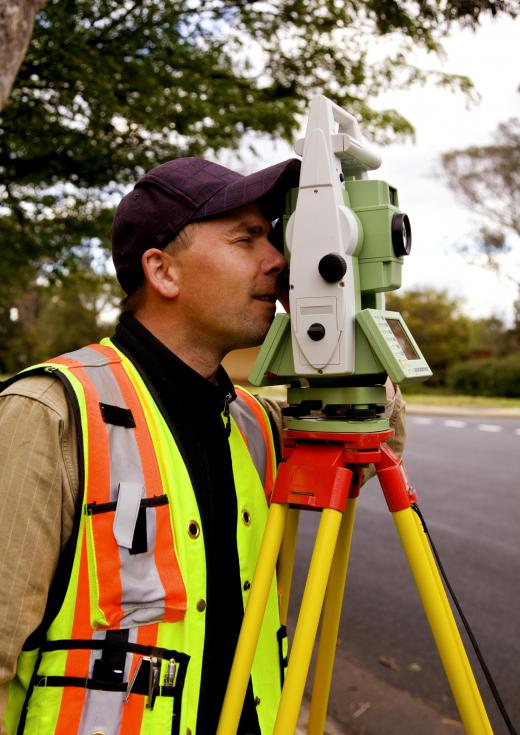Survey stakes are markers people use in surveying projects to prepare job sites, mark out property boundaries, and provide information about claims on natural resources like timber and minerals. They can be made from wood, metal, plastic, and other materials and typically come in a range of sizes and colors for different purposes. Sources can include surveying and construction suppliers, and people can also make or order their own for custom applications.
A survey stake is typically small, with a pointed end to make it easy to drive into the earth. It may be color coded or have a space for people to write information on the stake. Surveyors use stakes when assessing sites to mark out boundaries, record data, and convey information to other people. On a job site, for example, survey stakes indicate where it is necessary to backfill with soil to raise the elevation, or to cut soil away to lower it. Stakes can also provide information about slope and grading for people getting a job site ready for construction.

While placing surveying stakes, surveyors use tools like levels and measuring tape to precisely place each stake and record information about it on a survey chart. Often this requires a team, as the process can be very time consuming. Members of the team can have different tasks like taking and calling out measurements, placing stakes, and recording data on their charts. People may also take photographs to document the site in case there is any confusion in the future.

It may be necessary to use hand tools to drive stakes in when the ground is hard or rocky. Surveyors can also flag them with brightly colored tape to make sure they are visible. Visibility can be important for preventing injuries as well as making sure people can see all of the stakes in a given site when they are performing tasks. The surveyor may color code the flags to make them correspond with different types of surveying tasks.
Laws surrounding survey stakes vary. In some regions, stakes used in a property survey cannot be removed except with the permission of the property owner. It can also be illegal to interfere with survey stakes when they are part of a natural resources claim, as moving the stakes could create an ownership dispute. When numerous companies rush to the site of a new find, conflicts over survey stakes can arise, and it may be necessary to ask a government agency to intervene.
Ever since she began contributing to the site several years ago, Mary has embraced the exciting challenge of being a About Mechanics researcher and writer. Mary has a liberal arts degree from Goddard College and spends her free time reading, cooking, and exploring the great outdoors.

